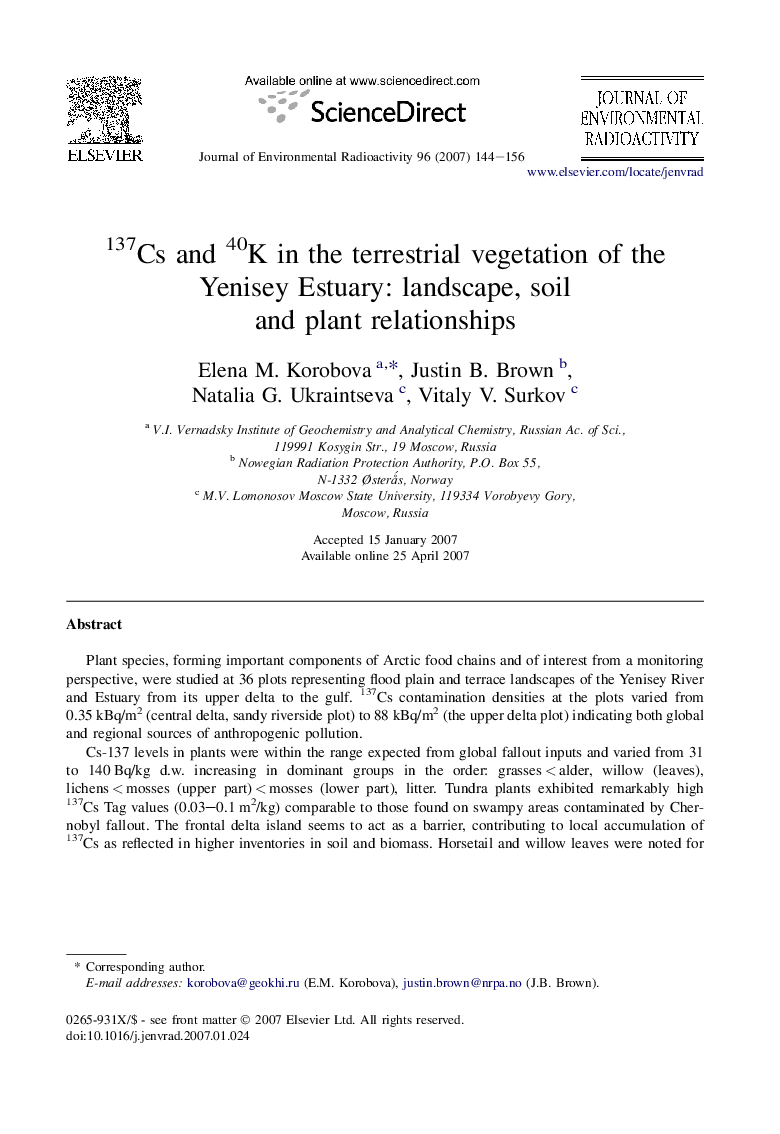| Article ID | Journal | Published Year | Pages | File Type |
|---|---|---|---|---|
| 1739362 | Journal of Environmental Radioactivity | 2007 | 13 Pages |
Plant species, forming important components of Arctic food chains and of interest from a monitoring perspective, were studied at 36 plots representing flood plain and terrace landscapes of the Yenisey River and Estuary from its upper delta to the gulf. 137Cs contamination densities at the plots varied from 0.35 kBq/m2 (central delta, sandy riverside plot) to 88 kBq/m2 (the upper delta plot) indicating both global and regional sources of anthropogenic pollution.Cs-137 levels in plants were within the range expected from global fallout inputs and varied from 31 to 140 Bq/kg d.w. increasing in dominant groups in the order: grasses < alder, willow (leaves), lichens < mosses (upper part) < mosses (lower part), litter. Tundra plants exhibited remarkably high 137Cs Tag values (0.03–0.1 m2/kg) comparable to those found on swampy areas contaminated by Chernobyl fallout. The frontal delta island seems to act as a barrier, contributing to local accumulation of 137Cs as reflected in higher inventories in soil and biomass. Horsetail and willow leaves were noted for higher 40K content and lower 137Cs Tag compared to mosses and alder, respectively. This makes the latter plant types more appropriate indicators of 137Cs contamination.
